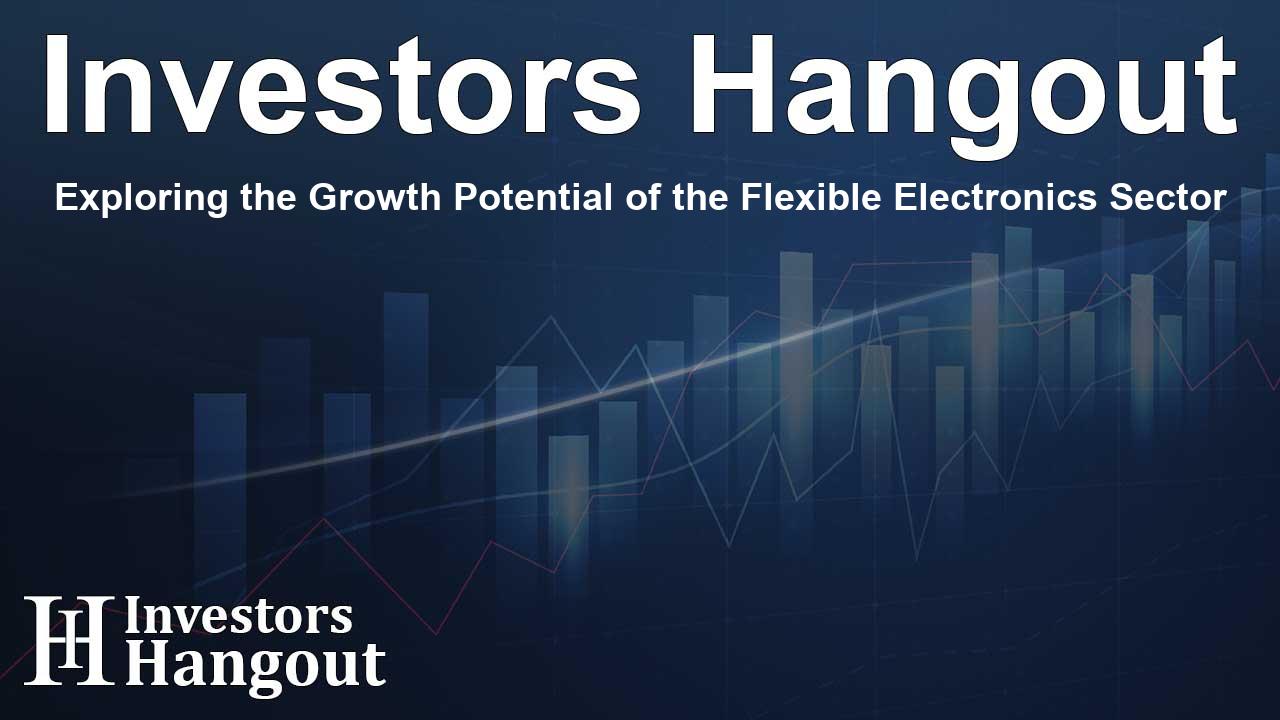Exploring the Growth Potential of the Flexible Electronics Sector

Flexible Electronics Market Overview
The flexible electronics market is witnessing significant growth, propelled by advancements in technology and an increasing demand for adaptive solutions across various sectors. In recent reports, the market was valued at approximately USD 32.65 Billion and is projected to escalate to USD 75.04 Billion by 2032. This explosive growth represents a compound annual growth rate (CAGR) of 9.72% from 2024 to 2032.
Trends Driving Market Expansion
Increasing adoption of flexible electronics can be attributed to technological innovations and a surge in consumer demand. Notably, the automotive sector has embraced these technologies, facilitating enhanced user experiences through flexible sensors and displays that streamline vehicle management and increase safety measures.
Healthcare Innovations
The healthcare industry is also a significant contributor to the rise of flexible electronics. Wearable biosensors allow for real-time health monitoring, catering to the growing preference for proactive healthcare solutions. These biosensors not only improve health outcomes but also align with the trend of consumers seeking smart and functional products.
Consumer Electronics Surge
As smart devices such as smartphones and laptops evolve, flexible displays have become essential. In the United States alone, flexible OLED display sales surged to 62 million units in 2023, with projections reaching 72 million units in 2024. Such displays enhance visual appeal and contribute to energy efficiency, meeting the rising demand for lightweight and portable devices.
Key Industry Players
Several major companies are spearheading innovations within the flexible electronics market:
- Samsung Electronics is known for its flexible OLED displays and innovative printed circuit boards.
- LG Display specializes in flexible OLED panels and touch sensors, leading in advancements that enhance consumer experience.
- Apple Inc. continues to explore the versatility of flexible displays for its devices, showcasing the power of adaptability in technology.
- Other notable contributors include Visteon Corporation, Sony Corporation, and 3M, each bringing unique products that enhance market competitiveness.
Market Segmentation Insights
The flexible electronics market can be segmented into various categories:
By Component
- Displays - which held a prominent share in revenue due to their flexible nature.
- Batteries that ensure longer life and efficient power management.
- Sensors integrated for improved functionality across devices.
By Application
- Consumer electronics that dominate the market, driven by innovations such as smartwatches and electronic health devices.
- Automotive applications focusing on user interfaces and monitoring systems.
- Healthcare solutions enhancing patient care through advanced monitoring.
Regional Market Dynamics
The flexible electronics market displays varying dynamics across different regions. North America leads with a 34% market share, largely driven by innovations in wearable technology. Leading tech companies are continuously enhancing product usability without compromising comfort, catering to consumer expectations for smart device integration into daily life.
In contrast, the Asia Pacific region is expected to witness the highest growth rate of 10.89% from 2024 to 2032. Countries such as China, Japan, and South Korea are heavily investing in research and development, fostering rapid advancements in lightweight and efficient devices.
Recent Technological Developments
Noteworthy advancements include Samsung's launch of the Galaxy Z Fold5, utilizing cutting-edge flexible OLED technology to enhance user experience. Furthermore, LG Display is making waves with its prototype stretchable displays, poised to redefine the scope of flexible electronics.
Frequently Asked Questions
What factors are driving the growth of the flexible electronics market?
Technological advancements, consumer demand for energy-efficient devices, and industry adoption in sectors like automotive and healthcare are key growth factors.
Who are the major players in the flexible electronics market?
Major players include Samsung Electronics, LG Display, Apple Inc., and 3M, each contributing to innovations and market expansion.
What applications are dominating the flexible electronics market?
Consumer electronics, including smartphones and wearables, are leading applications, reflecting consumer preferences for modern, functional designs.
How does the market differ regionally?
North America currently holds a significant market share, while the Asia Pacific is projected to see the fastest growth due to heavy investments in technology.
What recent advancements have been made in flexible electronics?
Recent advancements include Samsung's new foldable smartphone and LG Display's development of stretchable screens, showcasing ongoing innovation.
About Investors Hangout
Investors Hangout is a leading online stock forum for financial discussion and learning, offering a wide range of free tools and resources. It draws in traders of all levels, who exchange market knowledge, investigate trading tactics, and keep an eye on industry developments in real time. Featuring financial articles, stock message boards, quotes, charts, company profiles, and live news updates. Through cooperative learning and a wealth of informational resources, it helps users from novices creating their first portfolios to experts honing their techniques. Join Investors Hangout today: https://investorshangout.com/
Disclaimer: The content of this article is solely for general informational purposes only; it does not represent legal, financial, or investment advice. Investors Hangout does not offer financial advice; the author is not a licensed financial advisor. Consult a qualified advisor before making any financial or investment decisions based on this article. The author's interpretation of publicly available data shapes the opinions presented here; as a result, they should not be taken as advice to purchase, sell, or hold any securities mentioned or any other investments. The author does not guarantee the accuracy, completeness, or timeliness of any material, providing it "as is." Information and market conditions may change; past performance is not indicative of future outcomes. If any of the material offered here is inaccurate, please contact us for corrections.